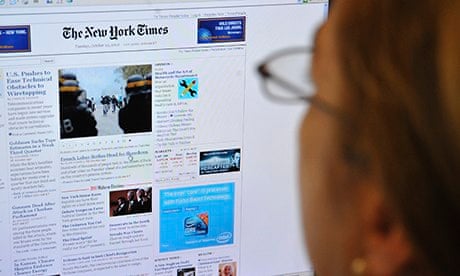In 1917, the American Federal Trade Commission settled a case with the Muensen Speciality Co., over an ad for its vacuum cleaner, which it presented as a favourable newspaper review. It was the first case where "advertorials" (or "native advertising" as they are now known) were identified by regulation in the US. Today you might expect to see something similar, but in the form of a viral link circulated round your social network, entitled "13 vacuum cleaners that suck in the wrong way, and one that doesn't".
Native advertising is not a new trend for 2014. It is already hotter than a delicious burrito from Chipotle, or a summer cruise on a luxurious Royal Caribbean liner. The Federal Trade Commission has however become so concerned about the new challenges of the digital advertorial that in December it organised a one-day workshop on the subject called Blurred Lines. It was not clear whether this was a meta-comment on product placement, or a paid ad for Robin Thicke's popular dance harassment anthem (perhaps the FTC should have made this more transparent).
It is already clear, though, that native advertising is the new paywall in media economics. An opportunity for new wealth creation coupled with almost as much anxiety over whether its implementation will be of long-term benefit or detriment to the media it supports. A stream of money controlled by publishers rather than a gargantuan bottom-feeding sales robot is enormously appealing. In digital advertising the problem of robotic sales networks and ever-expanding inventory has driven the price publishers get for advertising ever lower.
By reinventing the sausage factory as an artisan-crafted saucisse, and by allowing brands a little closer to their cool core, media companies aim to regain control of pricing and inventory. The rise in native advertising is helped by a new type of sophisticated "ad tech" company, such as Sharethrough and Outbrain, which devised the metrics and algorithms helping to create and measure the success of branded content. It is also helped by the fact that passing links around social networks is proven to be a more effective way to get people to watch and read mildly diverting content than having it sit on a static page.
The most admired new wave digital publishers – Buzzfeed, Vice, Quartz – already have the creation of native advertising as part of their central business strategy (Buzzfeed has a team of 40 people who work on branded content, the size of a small ad agency), but it has in the past made more traditional institutions nervous. That too is changing.
This week the New York Times unveils a new website design. Part of it will be a new native advertising push, with posts clearly labelled "paid post" and bearing a blue line of demarcation. In a detailed memo timed perfectly to coincide with the holiday break, its publisher, Arthur Sulzberger Jr, told staff that the new native advertising platform for the organisation would be digital and very clearly marked. It followed an announcement a month earlier by Time Inc., that the magazine publisher would dramatically increase the amount of native advertising it carries. The question that the FTC is concerned with is that of transparency in the mind of the consumer. Is it clear where funding for programmes and articles is coming from?
Separating the church of editorial from the state of advertising is more difficult in digital media; everything is necessarily melded together more closely, and the context or "furniture", which is hard to miss in a newspaper or during a broadcast, is stripped away as files zip round the web. The anxiety over transparency is understandable, particularly when it comes to vulnerable markets and toxic products, like loan companies, insurance schemes, lobbying and gambling products.
Two question marks hang over native advertising, which will become more significant this year. For the producers it is the longevity of the trend. At the moment the curve of enthusiasm for the approach, and ignorance about its benefits or impact, are both at a high, which is the point at which companies make money. This is unlikely to last. For the consumer it is the issue of transparency. It is easy to become very exercised by the potential of native advertising for good and ill. It is arguably a relatively benign part of a much more embedded trend.
Every person and institution can now make their own messages and potentially have as much impact as the largest corporation. The occlusion of motive is becoming more problematic in many areas of communication, but at least in native advertising there is an identifiable commercial transaction.
When CBS's primetime current affairs show 60 Minutes recently ran an exclusive interview with Amazon boss and new newspaper owner Jeff Bezos, it pitched him no hard questions and allowed him to demonstrate his potty scheme for deliveries by drone. This was not advertising, but nor was it really journalism; the access the programme gained reduced its appetite for inquiry and analysis. Advertising is everywhere, as fluid and malleable as the streams it inhabits. And increasingly there will be no lines, blurred, blue or otherwise.

Comments (…)
Sign in or create your Guardian account to join the discussion